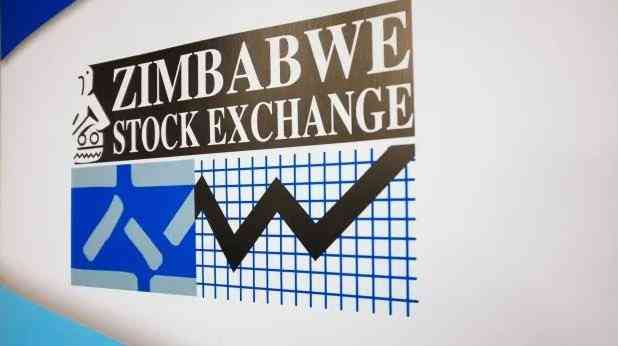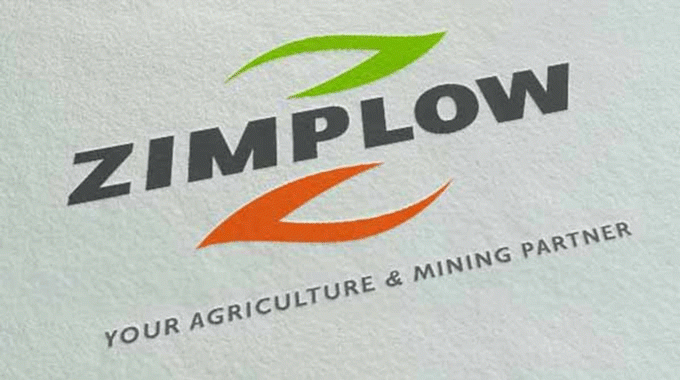
IN recent years, corporate governance has become a critical area of focus for organisations seeking to survive in the ever-evolving business environment.
At its core, corporate governance is about ensuring that companies are directed and controlled in a manner that fosters accountability, fairness, and transparency.
It encompasses the structures and processes by which decisions are made at the highest levels of an organisation — primarily within the board of directors. While most boards are structured properly and adhere to best practices, there is still a paradox where even well-governed companies can fail.
This article explores the delicate balance boards must strike in their roles, the importance of encouraging open dissent, and the unforeseen pitfalls that can arise despite adhering to governance best practices.
Ultimately, effective corporate governance is not just about the right structures but about the culture within the boardroom and the willingness to engage in constructive conflict.
The board’s role: Nose in, fingers out
One of the key principles of corporate governance is the board’s role as the overseer of the company’s operations.
This is often summarised by the phrase, “nose in, fingers out”. In essence, the board is expected to stay informed about the company’s performance, risks, and strategic direction without becoming entangled in the day-to-day management of the business.
- New perspectives: Resource backed loans and the future of domestic resource mobilisation in Zim
- Zvishavane’s people surrounded by mineral riches, but living in poverty
- New perspectives: Resource backed loans and the future of domestic resource mobilisation in Zim
- Zvishavane’s people surrounded by mineral riches, but living in poverty
Keep Reading
It is a balancing act that requires keen insight into the company’s operations without crossing the line into micromanagement.
Board members are entrusted with ensuring that the organisation is well-governed, compliant with laws and regulations, and on track to achieve its strategic objectives. Their role includes asking tough questions, challenging management when necessary, and ensuring that the organisation is adhering to sound principles of ethics and corporate responsibility.
However, they must leave the execution of those strategies to the company’s leadership team.
The risk in this approach is that some boards can become either too passive or too interventionist. A passive board may not dig deep enough into critical issues, while an overly interventionist board may undermine management’s authority and cause friction. Striking the right balance between oversight and interference is a constant challenge for corporate governance.
Proper structure doesn’t guarantee
It is tempting to believe that if a board follows best practices, it will automatically ensure a company’s success. After all, most boards today are structured properly and are diligent in adhering to widely accepted standards of governance. These standards include regular attendance at board meetings, personal investment of directors’ time and expertise, and the establishment of key committees such as audit and remuneration committees.
Furthermore, many boards implement codes of ethics and maintain appropriate board size and age diversity to promote effective decision-making.
Surprisingly, however, many companies that have failed financially or experienced significant crises had boards that adhered to these same standards.
They ticked all the boxes of governance best practices: directors showed up to meetings, spent time reviewing company reports, and served on critical committees. Yet, failure still occurred.
This raises an important question: If best practices are not enough to prevent failure, what else is needed? The answer lies in the less tangible aspects of governance —particularly the culture within the boardroom.
A culture of open dissent
One of the hallmarks of effective corporate governance is the promotion of a culture of open dissent. This means fostering an environment in which board members feel empowered to raise concerns, ask uncomfortable questions, and challenge the status quo without fear of reprisal.
A board that lacks open dissent is likely to fall into groupthink, where critical issues are overlooked or swept under the rug in the name of consensus.
Kathleen Eisenhardt and L.J. Bourgeois, renowned experts in organisational behaviour, famously observed: “The highest-performing companies have extremely contentious boards that regard dissent as an obligation and that treat no subject as undiscussable”.
This insight underscores the importance of fostering healthy debate and ensuring that no topic is off-limits during board discussions.
A board that encourages dissent will not shy away from discussing difficult or uncomfortable subjects, whether it be a controversial strategy, a troubling financial outlook, or a potential conflict of interest.
By allowing members to voice their concerns and challenge each other, the board can make more informed decisions and avoid costly blind spots.
However, promoting open dissent is easier said than done. It requires a board chair who can manage strong personalities, navigate conflict, and create a safe space for diverse viewpoints to be aired.
Additionally, board members must be willing to put the company’s long-term interests ahead of their own egos or personal loyalties. This is where many boards struggle, particularly in environments where dissent is viewed as disloyalty or where directors are more focused on maintaining harmonious relationships than on rigorously scrutinising decisions.
Pitfalls of governance
Despite the best intentions, corporate governance can be a slippery slope. Even the most well-structured boards with open cultures of dissent can fall prey to a variety of pitfalls. These include complacency, over-reliance on management, and failure to act on early warning signs of trouble.
One common issue is the board’s over-reliance on management for information. While it is crucial for boards to trust their executive teams, they must also maintain a healthy scepticism and seek independent verification of key data. Without this balance, boards may miss early warning signs of financial distress or strategic missteps.
Another potential pitfall is complacency, particularly in long-standing boards where directors may become too comfortable in their roles. Over time, directors may lose their critical edge, becoming less likely to challenge management or push for necessary changes.
This complacency can be especially dangerous in industries undergoing rapid change, where agility and innovation are crucial to survival.
Conclusion
Corporate governance is an ongoing process, not a one-time achievement. While adhering to best practices such as board structure, committee formation, and ethical guidelines is important, these factors alone cannot guarantee success.
The culture within the boardroom — especially the willingness to embrace open dissent — plays a critical role in determining whether a board can effectively guide a company through both good times and bad.
Boards that encourage healthy debate, maintain a vigilant watch over management, and stay attuned to early warning signs of trouble are far more likely to help their companies succeed in the long term.
In the end, corporate governance is a delicate balancing act, and without careful attention, even the most well-intentioned boards can find themselves on a slippery slope toward failure.
The sequence
The sequence is clear: foresight first, then strategy.
Foresight provides the context, identifying future trends and challenges that inform the strategic choices a company makes. Strategy, in turn, defines how the company will position itself to respond to or shape the future.
In practice, this means that businesses should first engage in environmental scanning to analyse external trends and assess potential future scenarios.
Once foresight has provided a clear view of possible future developments, companies can begin making strategic choices about where to play and how to win.
Tesla's ability to anticipate the future of EVs through foresight and make bold strategic choices based on that foresight is an example of this sequencing in action.
While foresight typically comes first, the process is iterative.
As the market evolves and new trends emerge, companies must revisit their foresight efforts to refine their strategies. Conversely, as companies implement their strategies, they gain insights that can influence future foresight.
Microsoft's journey into cloud computing illustrates this point. The company initially used foresight to recognise the rise of cloud services and pivoted from traditional software to cloud based solutions with its Azure platform.
As Microsoft continues to grow its cloud business, it remains vigilant about emerging trends in AI and big data, using these insights to adjust its strategy and stay ahead of competitors.
Planning and execution
Once foresight has informed the strategy and the strategic choices have been made, the next step is planning and execution.
Planning focuses on translating those strategic choices into actionable steps.
This includes setting short term objectives, allocating resources, and developing detailed action plans to ensure the strategy is implemented effectively.
Netflix provides a case in point.After deciding to pivot from DVDs to streaming, Netflix's planning and execution involved securing content licenses, building a robust streaming platform, and marketing the new service to its growing customer base.
In addition to long term foresight and strategic planning, companies must stay agile in the short term._
Signaling refers to the immediate tactical responses a business makes to market conditions or competitive moves. While foresight and strategy focus on the long term, signaling ensures that companies remain responsive to immediate challenges without deviating from their strategic vision.
During the COVID-19 pandemic, many retailers had to make quick tactical adjustments to shift to online delivery and curbside pickup. These adjustments allowed them to continue serving customers while maintaining their long term strategic focus.
Conclusion
Businesses may need to reflect on the way they develop their strategies.
Businesses must first engage in foresight—exploring future trends, disruptions, and opportunities. Foresight helps companies see where the world is going and prepares them to respond.
Once foresight provides a view of the future, companies can develop strategy by making deliberate, informed choices about where to play and how to win.
The sequence is clear: foresight first, strategy second. However, the process is iterative, with foresight continually feeding into the strategy to ensure that organisations stay ahead of change and remain competitive. By mastering both foresight and strategy, businesses can position themselves to not just survive but thrive.
The key takeaway is, strategy is about making choices, but those choices must be based on solid foresight to navigate the complex business landscape.
Together, foresight and strategy offer a powerful framework for building long term success.
- Nguwi is an occupational psychologist, data scientist, speaker and managing consultant at Industrial Psychology Consultants (Pvt) Ltd, a management and HR consulting firm. https://www.linkedin.com/in/memorynguwi/ Phone +263 24 248 1 946-48/ 2290 0276, cell number +263 772 356 361 or e-mail: mnguwi@ipcconsultants.com or visit ipcconsultants.com.










